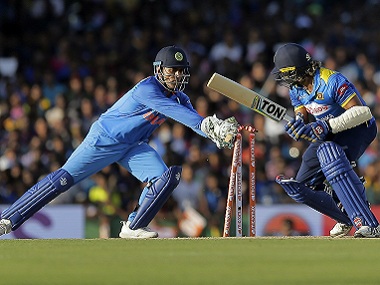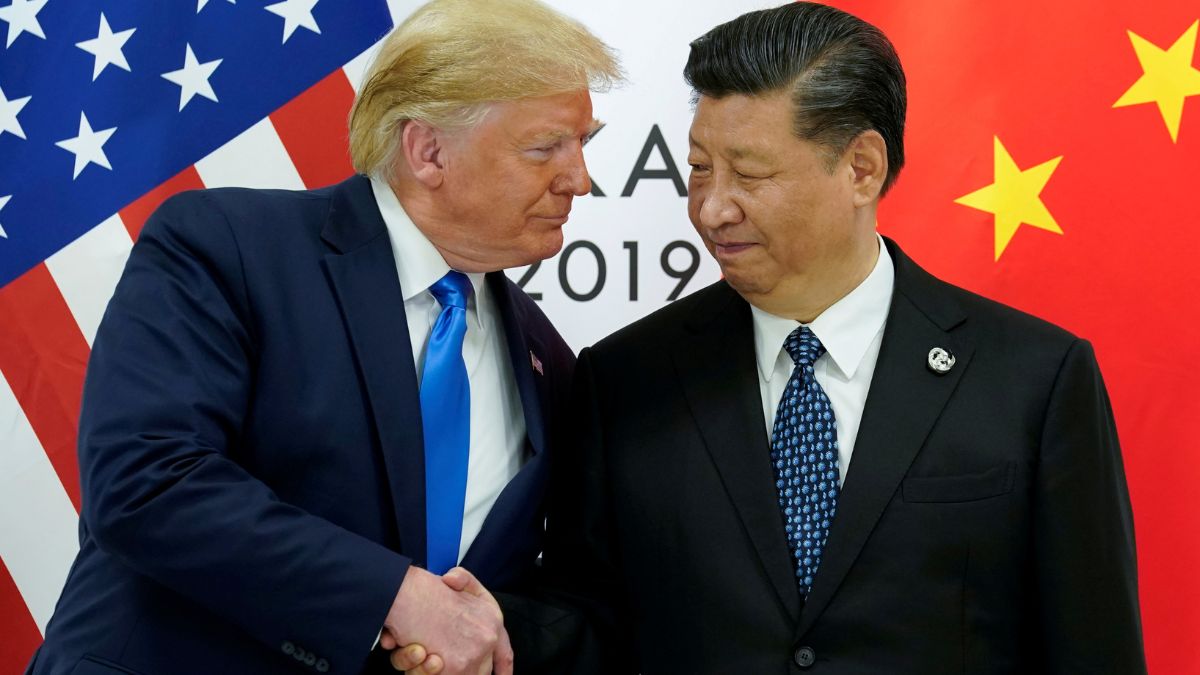The first thing that comes to the mind of every cricket fan when speaking of MS Dhoni is the word ‘finisher’. Seldom has the cricketing world seen such a clinical middle-order batsman who finishes off run chases with the ease of kicking a ball. Dhoni has been all about the drama of the final over run chases. Most of his 13-year-old international career has been about him and that fateful bowler who bowls that last over. The game-turning innings in the 2011 World Cup final and the booming six to complete India’s triumph will stand forever as Dhoni’s legacy. But what about his wicket-keeping? [caption id=“attachment_4006863” align=“alignleft” width=“380”] MS Dhoni stumps out Lasith Malinga during the first ODI. AP[/caption] Have India ever had a better wicket-keeper? Syed Kirmani comes to mind. The retired wicket-keeper was in all likelihood, the most technically-correct among Indian glovesmen. But how important technique is in cricket, be it batting, bowling or keeping, is still debated with Virender Sehwag’s two triple hundreds standing as ominous examples for ‘what works for one may not work for another’. Dhoni belongs to one such category. He may not be the most polished of wicket-keepers around. But he has a self-made technique that works pretty well for him as evidenced by his 743 dismissals behind the stumps across formats, next only to Mark Boucher and Adam Gilchrist. The two others mentioned, Boucher and Gilchrist, are known as much, if not more, for their glovework as their batting. They have stood guard behind the three poles with enough certainty and precision for over a decade to etch their names into the history books. Dhoni, on the other hand, has been different. His legacy is written in gold courtesy his exploits with the willow that have often overshadowed his spectacular abilities behind the stumps. During the 5th and final ODI of the India-Sri Lanka series, Dhoni became the first wicket-keeper to effect 100 stumpings in ODI cricket. He went past Sri Lanka’s Kumar Sangakkara’s 99 stumpings to stand atop the wicket-keeper’s chart. He had Sri Lankan tailender Akila Dananjaya stumped off Yuzvendra Chahal to complete the feat. It is no surprise that this record bears Dhoni’s name. He is a fantastic keeper to spinners, and this is proved by the sheer number of stumpings he effected over the course of his career. Dhoni has 161 stumpings across formats as against the next best, Kumar Sangakkara, who has 139. Only one other glovesman — Romesh Kaluwitharana — has over 100 stumpings across formats. Dhoni, however, is the only one to have over 100 in one format alone. https://twitter.com/sachin_rt/status/904361960493400065 Cricket is a game of rules and there are several ways this is emphasised by coaches across the globe. Technique does not end with batting alone as wicket-keepers are also expected to follow certain guidelines to reap better returns. One major rule with regards to wicket-keeping or fielding in general is inertia. With the ball travelling to the fielder’s hands at rapid pace, they are expected to catch the ball and let it slide with the momentum for some time before resisting the motion. By absorbing the momentum of the ball slowly, the chances of it popping out are negated to a large extent. While most wicket-keepers follow this tactic against fast bowlers or spinners, Dhoni has a completely different ideology. He believes in attacking the ball and throwing his hands at the stumps as quickly as possible. In Dhoni’s case, when he keeps to the spinners, he moves his hands towards the ball and without moving his hand back for even a second, guides it to the stumps. This rapid movement saves more than a millisecond, which helps him make more stumpings than most other ‘keepers. https://youtu.be/HZVmkT8fKb4 His cheeky run-outs by standing in front of the stumps when the throw comes in is also something which young keepers around the globe are trying to imitate. While the age old wicket-keeping technique would state that a keeper needs to be behind the stumps when the throw comes in, Dhoni doesn’t believe in that. He stands ahead and flicks the ball onto the stumps many a times to catch the batsman by surprise. India’s fielding coach, R Sridhar, had given an appropriate explanation for Dhoni’s glovework. “While others use their hands to produce that give, he uses his wrists. While his hands are going towards the stumps, there’s a slight flick of the wrists in the backward direction,” R Sridhar had said, “That’s the Mahi way, and it’s one step ahead of the regular wicket-keeping manual.” https://twitter.com/CSKian716/status/904330230222880768 He has other tricks up his sleeve too. All of us might remember his quirky leg work behind the stumps in the IPL. Several times in the IPL, Dhoni would stick his leg out at an angle when the batsman tried to get cheeky by playing a scoop or a late cut. He has succeeded on quite a few occasions as well, which means that all of his bag of tricks aren’t based on guesswork alone. Another characteristic of Dhoni the glovesman is his shrewd awareness behind the stumps. Being a wicket-keeper, he has one of the best views of what happens between the bowler and batsman and based on that he reacts pretty quickly. https://youtu.be/ELZf51PDumo Take for example his sensational run-out against Bangladesh in that fateful last ball in the World T20. Any other keeper would have tried an underarm throw. But Dhoni, who was already prepared for this event by removing his right-hand glove before the ball was bowled, did not want to take a chance and effected a run-out by dashing faster than the batsman. It takes immaculate game awareness and self-confidence to do something like that and Dhoni has both of that in plenty. With the advent of DRS, teams have an option to challenge on-field decisions. While most teams have struggled to identify which decisions to review, India have had no such qualms, at least in limited-overs cricket, with Dhoni’s judgment being as good, if not better, than the umpire’s. Such is his awareness behind the stumps that he knows which decisions need to be sent upstairs. In the modern era, that is one additional skill a keeper needs and Dhoni leads the way yet again. The ‘Mahi way’ might seem to be too unorthodox for ardent followers of the rulebook, but it undoubtedly works for him and India. “Not many people realise that in the past 10 to 12 years, however Dhoni has played for the country, he never had a bad day as far as his gloves are concerned. We always treat him more like a batsman, but the phenomenal stuff he does behind the wickets, not many people appreciate. According to me, he is still the best wicket-keeper in the world,” Indian selector MSK Prasad had said before the Champions Trophy this year. The former ‘keeper-turned-selector is spot on. Dhoni may not be the best when it comes to wicket-keeping but he has certainly manufactured a technique that works for him and it is reaping rich rewards. With 100 stumpings to his name in ODIs, Dhoni has carved his name in gold in the wicket-keeping category. For those who crave statistics more than effectiveness, Dhoni has matched the numbers now. It is time to laud Dhoni the wicket-keeper.
A key characteristic of Dhoni the glovesman is his shrewd awareness behind the stumps.
Advertisement
End of Article


)

)
)
)
)
)
)
)
)



